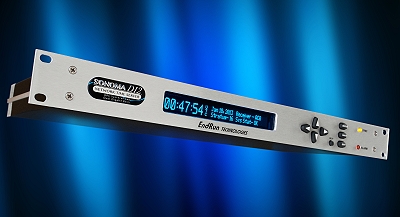What is Stratum 1?

In the world of NTP, stratum levels define the distance from the reference clock. A reference clock is a stratum-0 device that is assumed to be accurate and has little or no delay associated with it. The reference clock typically synchronizes to the correct time (UTC) using GPS transmissions, CDMA technology or other time signals such as Irig-B, WWV, DCF77, etc. Stratum-0 servers cannot be used on the network, instead, they are directly connected to computers which then operate as stratum-1 servers.
A server that is directly connected to a stratum-0 device is called a stratum-1 server. This includes all time servers with built-in stratum-0 devices, such as the EndRun Time Servers, and also those with direct links to stratum-0 devices such as over an RS-232 connection or via an IRIG-B time code. The basic definition of a stratum-1 time server is that it be directly linked (not over a network path) to a reliable source of UTC time such as GPS, WWV, or CDMA transmissions. A stratum-1 time server acts as a primary network time standard.
A stratum-2 server is connected to the stratum-1 server OVER A NETWORK PATH. Thus, a stratum-2 server gets its time via NTP packet requests from a stratum-1 server. A stratum-3 server gets its time via NTP packet requests from a stratum-2 server, and so on.
As you progress through different strata there are network delays involved that reduce the accuracy of the NTP server in relation to UTC. Timestamps generated by an EndRun Stratum 1 Time Server will typically have 10 microseconds accuracy to UTC. A stratum-2 server will have anywhere from 1/2 to 100 ms accuracy to UTC and each subsequent stratum layer (stratum-3, etc.) will add an additional 1/2-100 ms of inaccuracy.
For another explanation of NTP Strata read this wikipedia article on NTP Servers Clock Strata.
